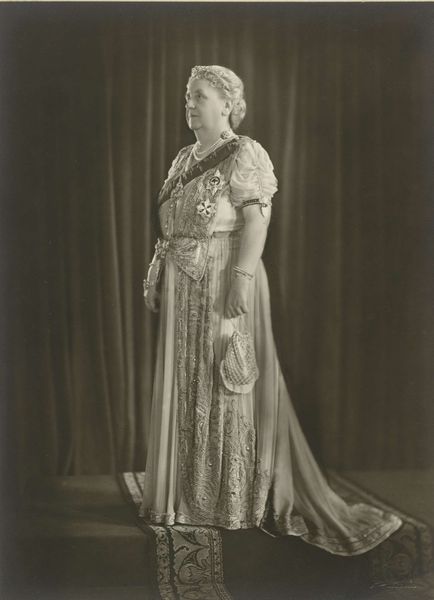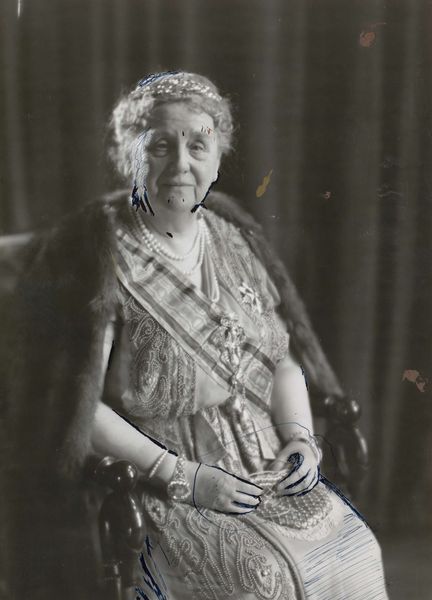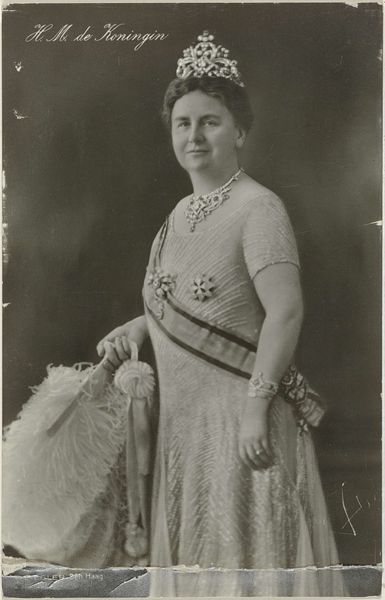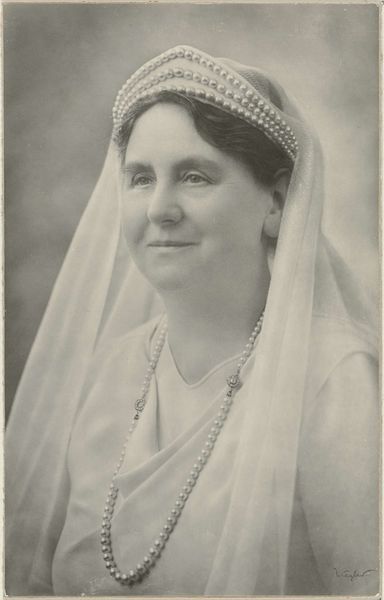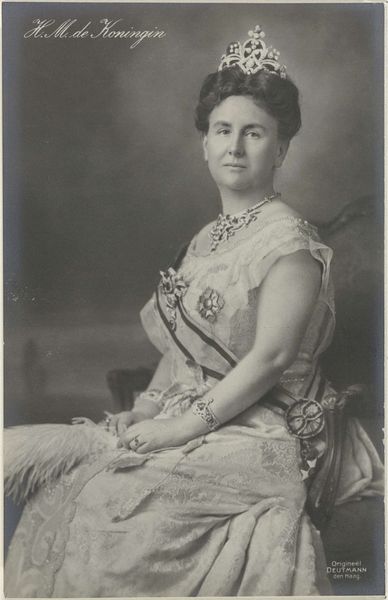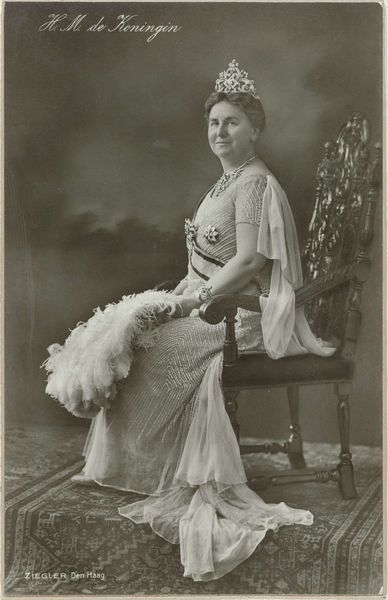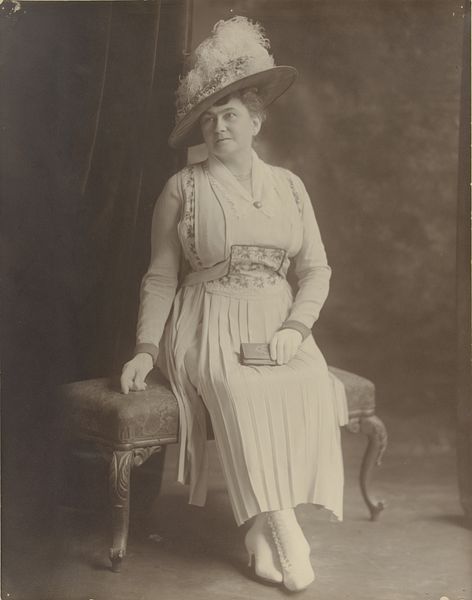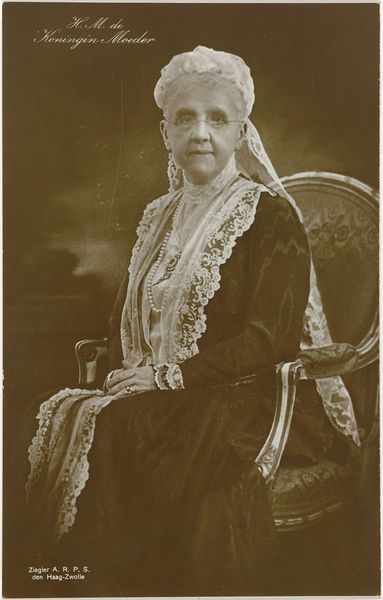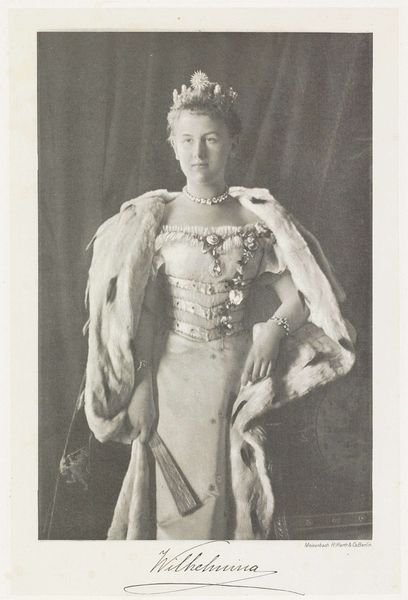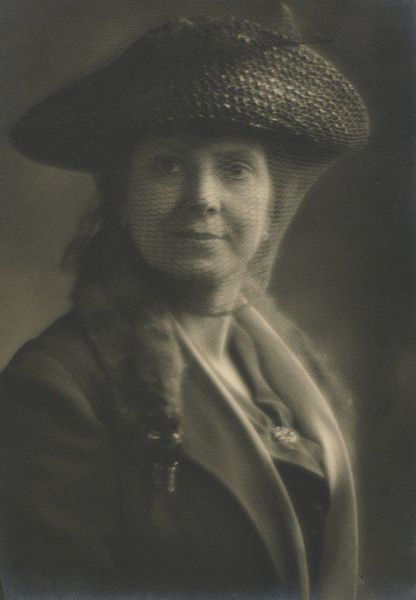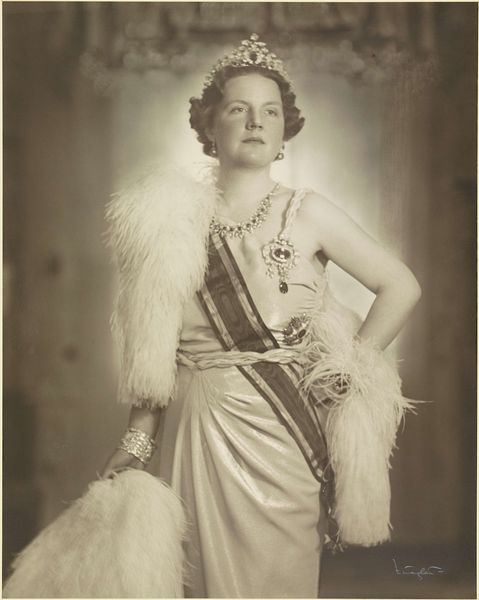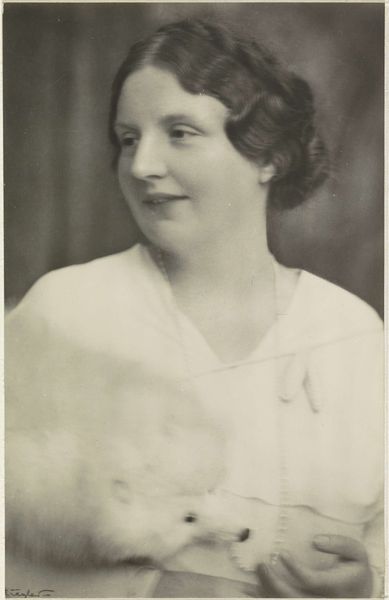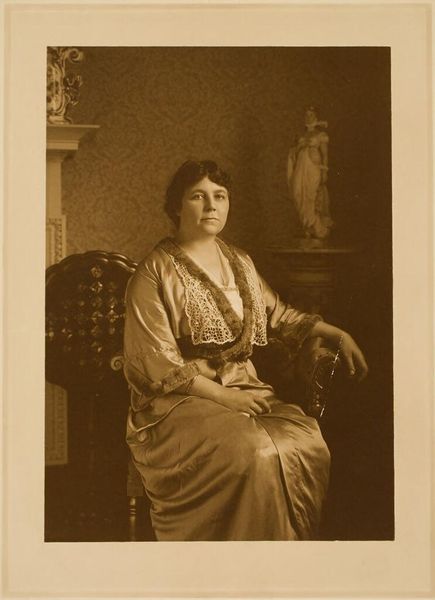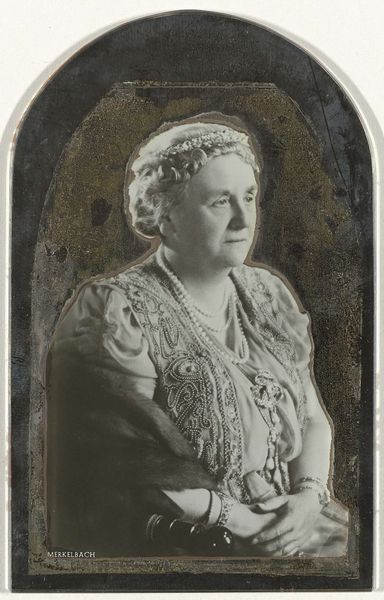
Dimensions: height 18 cm, width 24 cm
Copyright: Rijks Museum: Open Domain
Editor: So, here we have "Koningin Wilhelmina poseert met de Willemsorde", a gelatin silver print from 1948 by Atelier Merkelbach. It's a portrait of Queen Wilhelmina in full regalia. I am struck by how posed and deliberate it feels, a conscious construction of image. What's your read on this work? Curator: Indeed, and given the period, post-war Netherlands, this image resonates deeply with socio-political intentions. How do you think this photograph was received at the time? It presents Queen Wilhelmina as a symbol of stability and resilience after years of occupation. This is no spontaneous snapshot, it’s a meticulously crafted performance intended for public consumption. Consider the Willemsorde – a military order - prominently displayed; it underscores her role during the war. Editor: It makes sense. A powerful symbol in difficult times! I imagine it helped restore national pride and a sense of continuity. Curator: Precisely! And the setting, probably a studio, allows for maximum control. Nothing is accidental here. The black and white medium further adds to its gravity, lending the image a timeless, almost iconic quality. Notice also the choice of photographer, a reputable studio adding institutional weight. These official portraits are rarely just aesthetic exercises; they are vital instruments in shaping public perception. Editor: So it's about crafting and controlling her image to rebuild national identity after the war. Curator: Exactly! And the circulation of the photograph in newspapers and public spaces solidified that intended narrative. Its power resides in its role within a broader framework of post-war recovery and nation-building. Editor: This makes me consider the role of royal portraits in the media at the time. Fascinating. Thanks for putting that into context. Curator: My pleasure. It's important to recognize these works aren’t isolated artistic creations; they actively participate in broader dialogues about power, representation, and historical memory.
Comments
No comments
Be the first to comment and join the conversation on the ultimate creative platform.
